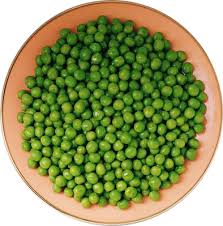
(text from Wikipedia) The rhombic dodecahedra honeycomb is a space-filling tessellation (or honeycomb) in Euclidean 3-space. It is the Voronoi diagram of the face-centered cubic sphere-packing, which is believed to be the densest possible packing of equal spheres in ordinary space (see Kepler conjecture).
It consists of copies of a single cell, the rhombic dodecahedron. All faces are rhombs, with diagonals in the ratio 1:√2. Three cells meet at each edge. The honeycomb is thus cell-transitive, face-transitive and edge-transitive; but it is not vertex-transitive, as it has two kinds of vertex. The vertices with the obtuse rhombic face angles have 4 cells. The vertices with the acute rhombic face angles have 6 cells.
The rhombic dodecahedron can be twisted on one of its hexagonal cross-sections to form a trapezo-rhombic dodecahedron, which is the cell of a somewhat similar tessellation, the Voronoi diagram of hexagonal close-packing.
In plain English: If you took a can of peas, drained it and packed some of the peas tightly between your two cupped hands, you would obtain:
- a bunch of peas each with twelve identical flat faces, parallellogram shaped
- no void between each peas until you separate them
- very messy hands.
- The resulting shape is the strongest thing next to a sphere
- It is arguably the strongest object you can create using flat surfaces
Hundred of houses built this way have been trhough terrible hurricanes and earthquakes,
